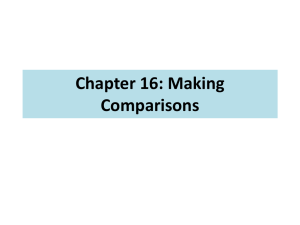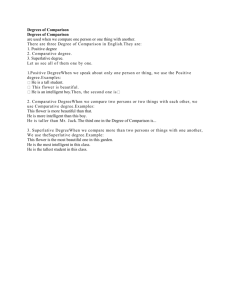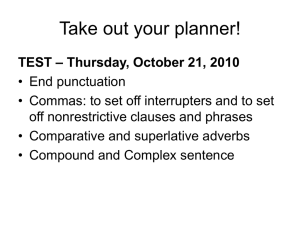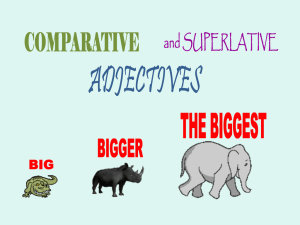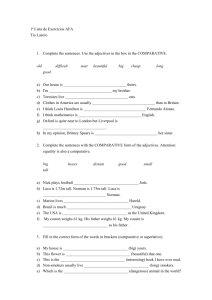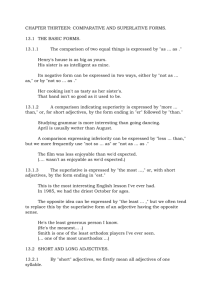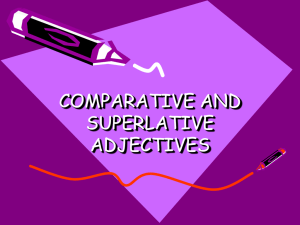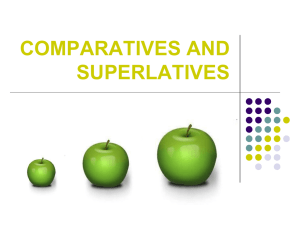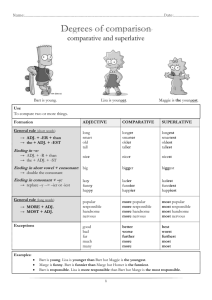File
advertisement
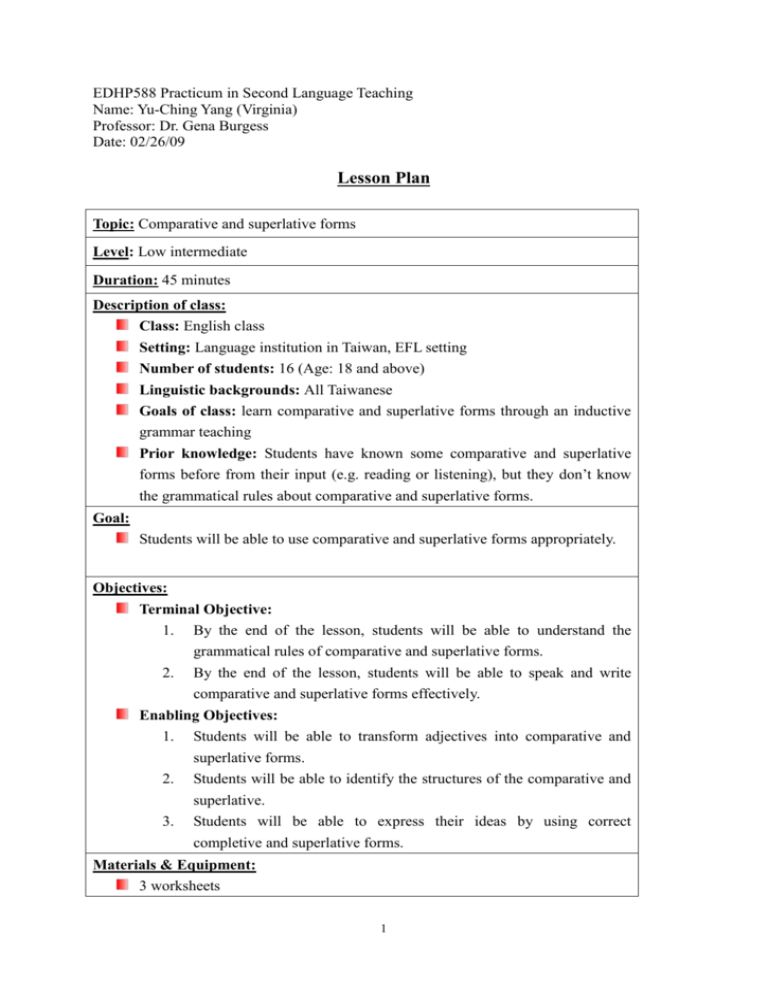
EDHP588 Practicum in Second Language Teaching Name: Yu-Ching Yang (Virginia) Professor: Dr. Gena Burgess Date: 02/26/09 Lesson Plan Topic: Comparative and superlative forms Level: Low intermediate Duration: 45 minutes Description of class: Class: English class Setting: Language institution in Taiwan, EFL setting Number of students: 16 (Age: 18 and above) Linguistic backgrounds: All Taiwanese Goals of class: learn comparative and superlative forms through an inductive grammar teaching Prior knowledge: Students have known some comparative and superlative forms before from their input (e.g. reading or listening), but they don’t know the grammatical rules about comparative and superlative forms. Goal: Students will be able to use comparative and superlative forms appropriately. Objectives: Terminal Objective: 1. By the end of the lesson, students will be able to understand the grammatical rules of comparative and superlative forms. 2. By the end of the lesson, students will be able to speak and write comparative and superlative forms effectively. Enabling Objectives: 1. Students will be able to transform adjectives into comparative and superlative forms. 2. Students will be able to identify the structures of the comparative and superlative. 3. Students will be able to express their ideas by using correct completive and superlative forms. Materials & Equipment: 3 worksheets 1 Blackboard and chalk Procedure (45 minutes): Motivation and Warm-up: (10 minutes) 1. The teacher first activates students' awareness of the comparative and superlative by comparing different objects. For example, compare life between country and city, the country the teacher likes the most, etc. 2. The teacher asks students what adjectives he/she has said, and writes down on the blackboard. 3. The teacher encourages students to guess what grammar rules are. 4. The teacher writes down the grammar rules on the blackboard and explains it’s important to properly use comparative and superlative forms when you want to express your ideas. Guided Activity: (18 minutes) - Activity 1: Comparative form (pair work): (9 minutes) 1. The teacher gives students handout (See Appendix A), explains the 3 examples on the worksheet, and demonstrates how to transform the first adjective into comparative form. 2. The teacher pairs up students and asks them to complete the exercise1 and discuss their answers (See Appendix A). 3. 4. The teacher asks students to share their answers and explains the grammar rules they use. The teacher gives students feedback about their answers and explanation. - Activity 2: Superlative form (pair work) (9 minutes) 1. The teacher goes to the exercise 2 (See Appendix B), and again explains the 3 examples on the worksheet, and demonstrates how to transform the first adjective into superlative form. 2. The teacher asks students to complete the exercise 2 and discuss their answers (See Appendix B). 3. 4. The teacher asks students to share their answers and explains what rules they use. The teacher gives students feedback about their answers and explanation. Independent Activity: (15 minutes) - Activity 1: Oral practice (group work) (10 minutes) 1. The teacher goes to exercise 3 (See Appendix C), divides students into small group of three to four, and asks them to choose two topics 2 heading for their groups. 2. The teacher then asks groups to decide on three objects in each topic area, and express their ideas by using comparative and superlative sentences. 3. The teacher asks each group to share their ideas regarding the topics they have chosen. - Activity 2: Writing practice (individual work) (5 minutes) 1. The teacher asks students to write 10 sentences based on their conversation using comparative and superlative forms, and prepare to share after writing. At the end of the class, students’ papers will be collected. Closure (2 minutes) 1. The teacher briefly states what they have learned today, and answers students’ questions. Extra-Class Work: Students need to find out 5 sentences from newspaper, magazines or any other written paper, which includes comparative or superlative forms. Evaluation: The enabling and terminal objectives are met by the following assessment. 1. 2. 3. Through the exercise 1 and 2, the teacher can know if students understand the structures of comparative and superlative forms. Through the exercise 3, the teacher can understand if students can express their ideas by using correct comparative and superlative forms. Through individual writing exercise, the teacher will know if students can correctly write comparative and superlative sentences. References: http://www.about.com/education/ 3 Appendix A Exercise 1: Read the sentences below and then give the comparative form for each of the adjectives listed. Lucy is more beautiful than Linda. I think John is happier now than a year ago. Could you open the window, please? It's getting hotter in this room by the minute. interesting ___________ weak ___________ funny ___________ important ___________ careful ___________ big ___________ small ___________ polluted ___________ boring ___________ angry ___________ Appendix B Exercise 2: Read the sentences below and then give the superlative form for each of the adjectives listed. New York has got to be the most exciting city in the world. His biggest desire is to return home. She is probably the angriest person I know. interesting ___________ weak ___________ funny ___________ important ___________ careful ___________ big ___________ small ___________ polluted ___________ boring ___________ angry ___________ 4 Appendix C Exercise 3: Choose one of the topics below and think of three examples from that topic for example: Sports - football, basketball and surfing. Compare the three objects. Cities Sports Writers Films Cars Singers Countries The objects in the classroom others 5
